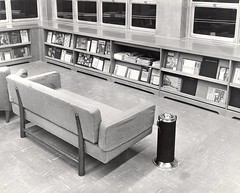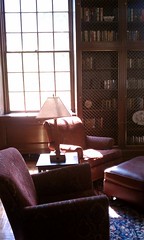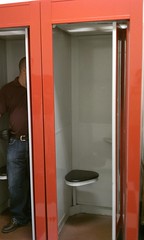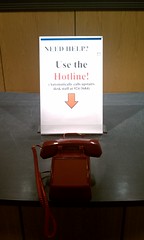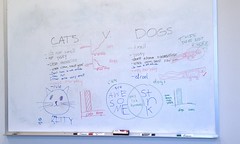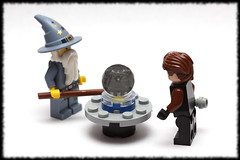
My library is often on the forefront of innovation, having the advantage of a healthy budget and staff size, yet small enough to be nimble. Frequently, when my colleagues return from conferences and give their reports, they’ll conclude with something along the lines of “we’re already doing most of the things they talked about.” At a recent conference report session, that was repeated again, with one exception: we have not implemented a web-scale discovery system.
I’m of two minds about web-scale discovery systems. In theory, they’re pretty awesome, allowing users to discover all of the content available to them from the library, regardless of the source or format. But in reality, they’re hamstrung by exclusive deals and coding limitations. The initial buzz was that they caused a dramatic increase in the use of library resources, but a few years in, and I’m hearing conflicting reports and grumblings.
We held off on buying a web-scale discovery system for two main reasons: one, we didn’t have the funding secured, and two, most of the reference librarians felt indifferent to outright dislike towards the systems out there at the time. We’re now in the process of reviewing and evaluating the current systems available, after many discussions about which problems we are hoping they will solve.
In the end, they really aren’t “Google for Libraries.” We think that our users want a single search box, but do they really? I heard an anecdote about how the library had spent a lot of time teaching users where to find their web-scale discovery system, making sure it was visible on the main library page, etc. After a professor assigned the same students to find a known article (gave them the full citation) using the web-scale discovery system (called it by name), the most frequent question the library got was, “How do I google the <name of web-scale discovery system>?”
I wonder if the ROI really is significant enough to implement and promote a web-scale discovery system? These systems are not cheap, and they take a bit of labor to maintain them. And, frankly, if the battle over exclusive content continues to be waged, it won’t be easy to pick the best one for our collection/users and know that it will stay that way for more than six months or a year.
Does your library have a web-scale discovery system? Is it everything you thought it would be? Would you pick the same one if you had to choose again?



